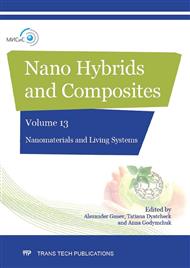p.102
p.108
p.115
p.123
p.130
p.135
p.142
p.149
p.156
Theoretical Aspects of Construction of Turning up and Loading Machine with Disinfection Option for Agricultural Waste by Carbon Nanostructures Modified Sodium Acetate
Abstract:
The present paper describes the results of the use of new technology of disinfection and processing of agricultural waste by carbon nanostructures modified sodium acetate. Improving the efficiency of processing of agricultural waste was obtained via sodium acetate in the presence of carbon nanotubes. In order to distribute the sodium acetate in the processed waste and subsequent processing of waste effectively special machines/devices were developed. The theoretical substantiation of the basic structural elements was presented for mechanical processing of agricultural waste devices. The experimental investigations showed a high efficiency of technology which led to a reduction of pathogens at the pre-processing of manure by 60%. The consumption of sodium acetate with carbon nanotubes was 50 liters per 1 ton of manure.
Info:
Periodical:
Pages:
130-134
Citation:
Online since:
January 2017
Price:
Сopyright:
© 2017 Trans Tech Publications Ltd. All Rights Reserved
Share:
Citation:


